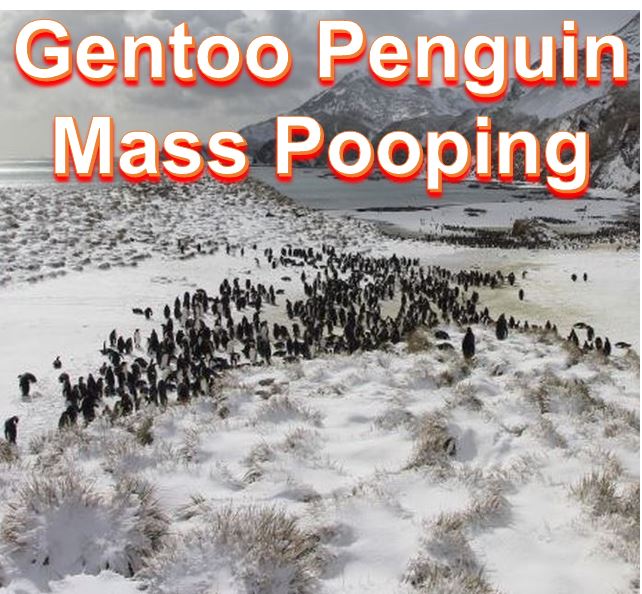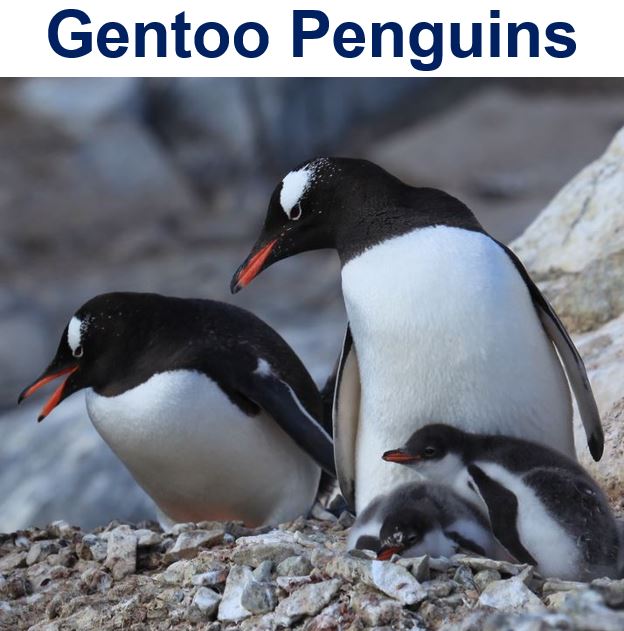Gentoo penguins gather in large groups before they breed and drop huge amounts of poop, known officially as guano. This darkens the snow, making it melt, exposing rocky ground on which they make their nests, researchers say.
According to scientists at the University of Oxford and the Australian Antarctic Division, Gentoo penguins, which tend to prefer small groups, assemble in large numbers before they begin to breed and use their dark guano to melt out rocky breeding sites earlier than they would otherwise melt.
When the guano darkens the snow, it absorbs heat faster (than light colors). The video at the bottom of this page shows one year of the Cuverville Island Gentoo penguin colony.

Researchers believe the crowd-pooping is not done intentionally. (Image: University of Oxford)
Mass-pooping probably not done on purpose
The researchers believe the penguin muck-spreading en-masse is not done intentionally. They do not think the penguins are deliberately trying to prepare their nests in advance.
They spent a year filming the behavior of a Gentoo penguin colony on Curverville Island, off the west coast of Graham Land in Antarctica. They also used snow gauges to determine how rapidly snow melted as the birds came and went.
The region is usually covered in a blanket of ice and snow, but at certain times of year that changes. The penguins gather in large groups, leaving piles of poop. The guano’s dark color allows the Sun’s rays to be absorbed more quickly.
As the darker surface absorbs more light, it melts, leaving a lot of bare rocky shelters, which are ideal for making nests in which to rear their young.
About Gentoo penguins
The Gentoo penguin (Pygoscelis papua) has the most prominent tail of all penguins, which sticks out behind and sweeps from side to side as it walks. Its Latin name Pygoscelis means ‘brush tailed’.

Gentoo penguins defend their nests and young fiercely. (Image: Wikimedia)
It has white patches extending from its eyes, and a bright orange-red beak. Nobody knows where it got its name ‘Gentoo’ from. There are about 300,000 breeding pairs, making it one of the least numerous Antarctic penguins, according to the British Antarctic Survey.
Gentoo penguins tend to prefer to congregate in small (rather than large) groups, sometimes with other species. Their pair-bonding is strong, and they typically mate with the same partner as in the previous year.
They nest on open beaches or hilltops, and whenever they can will make a nest with pebbles and other objects. Their nests, into which two eggs are laid, are fiercely defended.
In southern locations both chicks are equally likely to survive, but in the northerly islands the second chick to hatch usually dies. If both chicks die, the adult Gentoo penguins will probably breed gain.
About one month after hatching, the chicks join the crèche.
Fledging takes from 62 to 82 days in the south, compared to 85 to 117 days in the north. Southern adults are smaller than their northern neighbours.
Video – Penguin mass pooping melts snow faster
